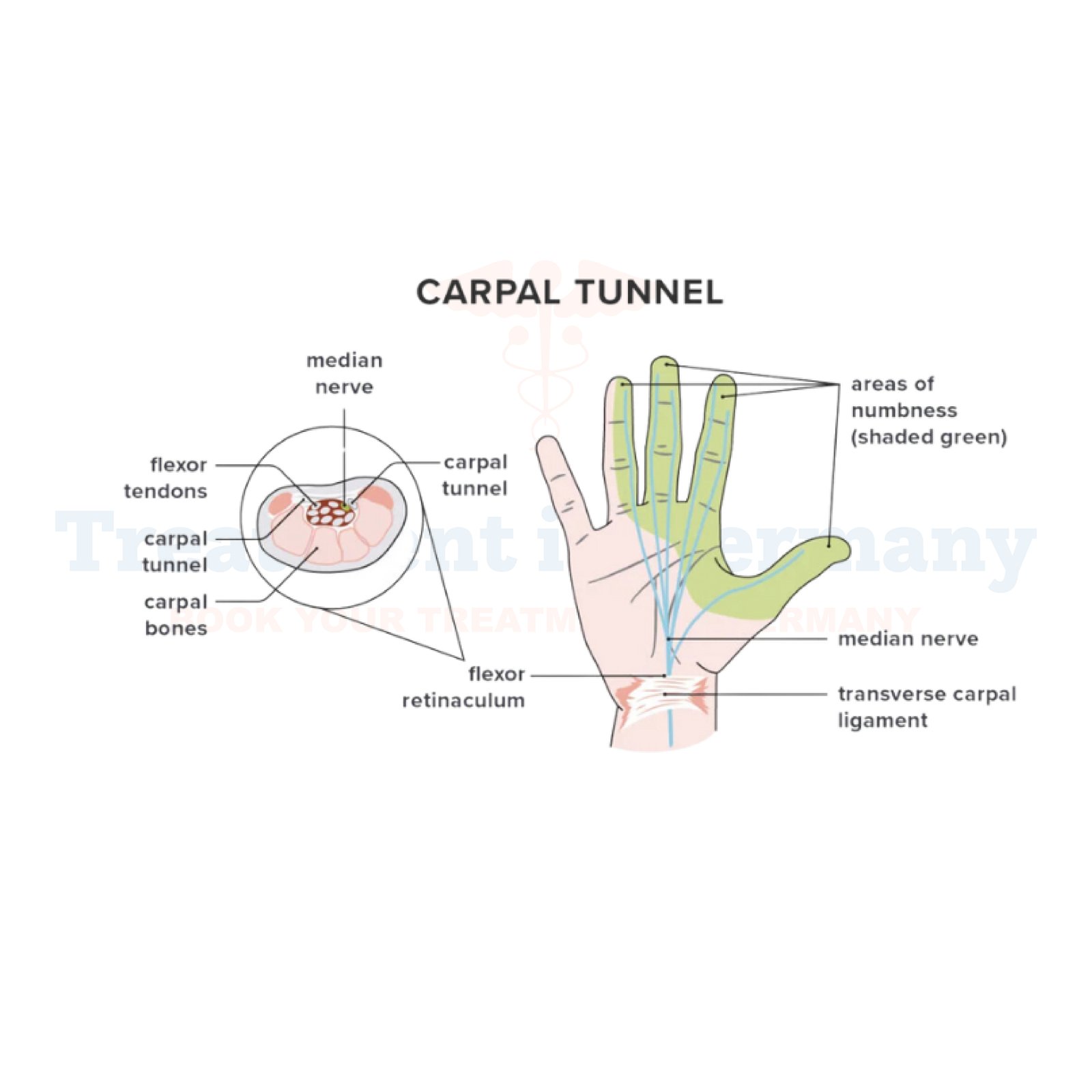Carpal Tunnel Syndrome (CTS) is a common condition that affects the hand and wrist, leading to discomfort, pain, and in severe cases, disability. It occurs when the median nerve, which runs from the forearm into the palm of the hand, becomes compressed or irritated at the wrist. As one of the most prevalent forms of repetitive stress injuries, CTS has gained attention due to its significant impact on daily functioning, particularly for those who engage in activities that involve repetitive hand movements.
CTS is more common in individuals who perform repetitive movements, such as typing, using a mouse, or working with machinery. It can affect one or both wrists and can range from mild discomfort to severe pain and loss of function.
Several factors can contribute to the development of Carpal Tunnel Syndrome:
Repetitive Hand Movements: Activities that involve frequent wrist motion, such as typing, knitting, or assembly line work, increase pressure on the median nerve.
Symptoms of Carpal Tunnel Syndrome
Carpal Tunnel Syndrome can develop gradually, and the symptoms may worsen over time. Common symptoms include:
Diagnosis of Carpal Tunnel Syndrome
Early diagnosis is crucial for effective treatment. In Germany, advanced diagnostic tools and expert healthcare providers are available to help patients get an accurate diagnosis.
Common Diagnostic Tools
Physical Examination:
Doctors often begin with a physical exam to check for signs of CTS. The doctor may apply pressure to the carpal tunnel and test the movement and strength of the hand and wrist.
Nerve Conduction Study (NCS):
An NCS measures the electrical activity of the median nerve and its speed of transmission. Slower nerve conduction may indicate CTS.
Electromyography (EMG):
An EMG test assesses the electrical activity in muscles to rule out other conditions that could mimic CTS.
Ultrasound or MRI:
These imaging techniques may be used to identify inflammation or structural abnormalities that could be contributing to the compression of the median nerve.
Treatment Options for Carpal Tunnel Syndrome
Treatment for CTS depends on the severity of the symptoms and the underlying cause. In Germany, patients have access to a wide range of advanced therapies, both non-surgical and surgical.
Non-Surgical Treatments
Wrist Splints:
Wearing a wrist splint at night helps to keep the wrist in a neutral position, reducing pressure on the median nerve and alleviating symptoms.
Physical Therapy:
A physical therapist may provide exercises to strengthen the muscles in the hand and wrist, reduce swelling, and improve flexibility.
Medications:
Nonsteroidal anti-inflammatory drugs (NSAIDs) or corticosteroid injections can help reduce inflammation and pain in the wrist
Ergonomic Adjustments:
Modifying the work environment or daily activities, such as adjusting the keyboard height or using voice-to-text software, can help prevent further irritation of the carpal tunnel.
Alternative Therapies:
Complementary therapies such as acupuncture, hydrotherapy, or massage therapy can provide relief from symptoms.
Surgical Treatments
If conservative treatments do not provide sufficient relief, surgery may be recommended. Surgical options include:
Carpal Tunnel Release Surgery:
This is the most common surgical treatment for CTS. It involves cutting the ligament that is pressing on the median nerve, providing more space and relieving pressure.
Endoscopic Surgery:
A minimally invasive procedure that uses small incisions and a camera to guide the surgeon in cutting the ligament. This option may allow for faster recovery.
Innovative Treatments for Carpal Tunnel Syndrome in Germany
Germany is known for its cutting-edge medical technology and specialized care in treating conditions like Carpal Tunnel Syndrome. Patients in Germany can access some of the most advanced treatments available today.
Dendritic Cell Therapy:
While not a mainstream treatment for CTS, some patients may explore regenerative therapies like dendritic cell therapy, which uses immune cells to promote healing in inflamed or damaged tissues.
Stem Cell Therapy:
Stem cell therapy, though experimental, holds promise for regenerating damaged nerve tissue and reducing inflammation in the carpal tunnel.
Platelet-Rich Plasma (PRP) Therapy:
PRP therapy involves using the patient's own blood platelets to promote healing of damaged tissues. This therapy may be used for mild to moderate CTS cases.
Laser Therapy:
Low-level laser therapy (LLLT) is used to reduce pain and inflammation, stimulate tissue repair, and promote healing in the wrist and hand.
Why Choose Treatment in Germany?
Germany has established itself as a leader in medical innovation, and its healthcare system provides world-class care for conditions like Carpal Tunnel Syndrome. Here’s why you should consider seeking treatment in Germany:
Highly Skilled Specialists:
German doctors and surgeons are renowned for their expertise in treating musculoskeletal disorders, including CTS.
State-of-the-Art Facilities:
Germany’s hospitals are equipped with the latest diagnostic and treatment technologies, ensuring patients receive accurate and effective care.
Innovative Therapies:
Access to cutting-edge therapies, such as stem cell therapy and platelet-rich plasma (PRP) therapy, which may not be widely available in other countries.
Multidisciplinary Approach:
German medical teams adopt a holistic approach to treatment, combining physical therapy, medication, ergonomic solutions, and surgery to achieve the best outcomes.
Conclusion
Carpal Tunnel Syndrome is a condition that can significantly impact daily activities and quality of life. Early diagnosis and appropriate treatment are key to managing symptoms and preventing long-term damage. In Germany, patients can access a variety of non-surgical and surgical treatments, along with innovative therapies that promote recovery and healing.
With the right care and lifestyle modifications, most individuals with CTS can experience significant relief and return to normal activities. If you’re seeking the best treatment for Carpal Tunnel Syndrome, Germany’s advanced medical facilities and specialized care make it an ideal destination.
👉 Contact us for further information and receive a complimentary consultation.

.webp)
.webp)
 (1).webp)
 (1).webp)


.webp)
.webp)
 (1).webp)
 (1).webp)

